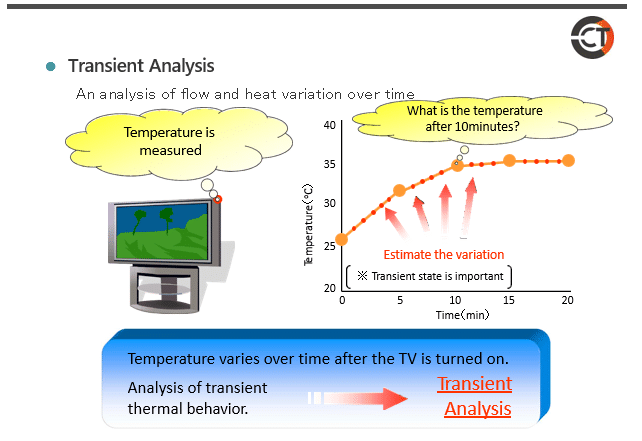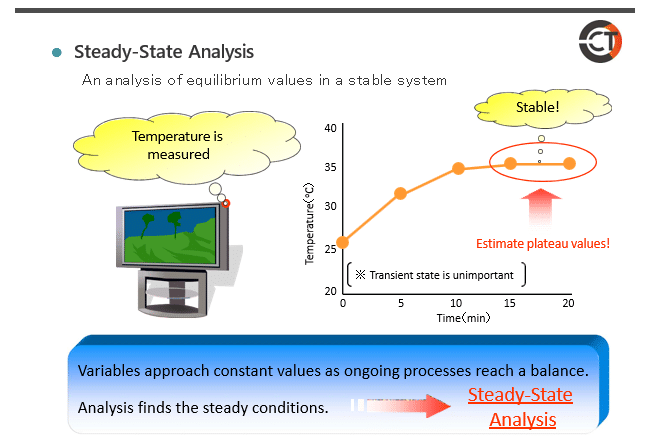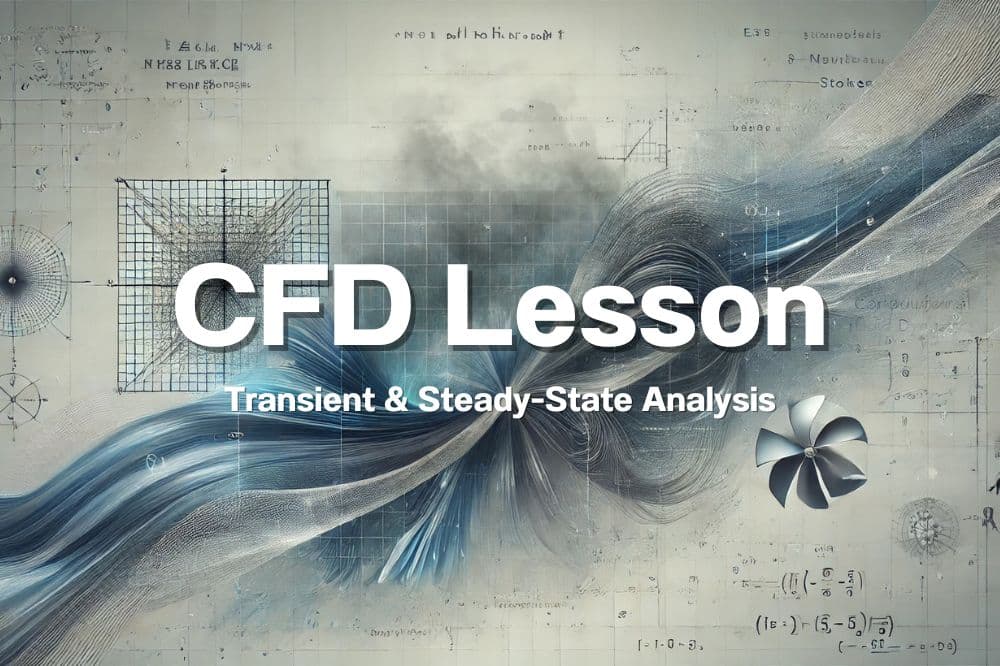Welcome to the third episode of our Computational Fluid Dynamics (CFD) course. In this installment, we will dive into the concepts of transient and steady-state simulations, which are crucial for understanding how fluid systems behave over time. This episode will provide a foundational understanding of these two types of simulations, their differences, and their applications in CFD.
Table of Contents
Understanding Transient and Steady-State Simulations
Transient Simulations

Transient simulations, also known as time-dependent simulations, are used to study how fluid systems evolve over time. These simulations account for the variations in fluid properties and flow conditions that occur as time progresses. Key aspects of transient simulations include:
- Time Dependency: Transient simulations solve the governing equations at multiple time steps, capturing the changes in fluid behavior and system dynamics over time. This allows for the analysis of phenomena such as temperature fluctuations, pressure waves, and evolving flow patterns.
- Application Examples: Transient simulations are particularly useful in scenarios where time-dependent effects are significant. Examples include analyzing the thermal response of a heat exchanger during start-up, studying the impact of sudden changes in flow conditions, or investigating the behavior of fluids in dynamic systems like pumps or turbines.
- Challenges: Transient simulations often require more computational resources compared to steady-state simulations due to the need for solving equations at each time step. Additionally, they can be more complex to set up and interpret due to the inclusion of time-dependent boundary conditions and initial conditions.
Steady-State Simulations

Steady-state simulations, on the other hand, are used to analyze fluid systems where the conditions do not change with time. These simulations assume that the system has reached a stable state where all variables are constant or change very slowly. Key aspects of steady-state simulations include:
- Time Independence: Steady-state simulations solve the governing equations assuming that the system has reached equilibrium, and thus do not account for temporal variations. The results represent the long-term average behavior of the system.
- Application Examples: Steady-state simulations are ideal for analyzing systems where time-dependent effects are negligible or can be averaged out. Examples include designing and optimizing HVAC systems, evaluating the flow distribution in a pipe network, or assessing the performance of a heat exchanger under steady operating conditions.
- Advantages: Steady-state simulations generally require less computational time and resources compared to transient simulations, making them suitable for cases where a time-averaged analysis is sufficient. They are often easier to set up and interpret due to the absence of time-dependent factors.
Comparing Transient and Steady-State Simulations
When to Use Each Simulation Type
- Transient Simulations are best suited for applications where time-dependent effects are critical to understanding the system’s behavior. They are essential for capturing dynamic responses and short-term variations.
- Steady-state simulations are appropriate for scenarios where the system’s behavior has stabilized or where time-dependent variations are minimal. They provide valuable insights into the long-term average performance of the system.
Choosing the Right Approach
The choice between transient and steady-state simulations depends on the specific goals of your analysis and the nature of the system being studied. In some cases, a combination of both approaches may be necessary to gain a comprehensive understanding of the fluid system’s behavior.
Conclusion
In this episode of our CFD course, we explored the concepts of transient and steady-state simulations, highlighting their key differences, applications, and challenges. Understanding these simulation types is essential for effectively analyzing and solving fluid dynamics problems. As you continue your journey in CFD, consider how these simulation approaches can be applied to your specific scenarios to achieve accurate and meaningful results.
Stay tuned for the next episode, where we will delve into advanced CFD topics and techniques to further enhance your understanding of computational fluid dynamics.
References
- Introduction to Computational Fluid Dynamics
- Description: Provides a comprehensive overview of CFD principles, including transient and steady-state simulations.
- Source: Introduction to Computational Fluid Dynamics: A Practical Approach by Atul Sharma
- Link: SpringerLink – Introduction to Computational Fluid Dynamics
- Fundamentals of Fluid Mechanics
- Description: Detailed explanation of fundamental concepts in fluid mechanics, including time-dependent and steady-state analyses.
- Source: Fundamentals of Fluid Mechanics by Bruce A. Finlayson
- Link: Wiley – Fundamentals of Fluid Mechanics
- CFD for Engineers
- Description: Discusses practical applications of CFD, including transient and steady-state simulations in engineering contexts.
- Source: CFD for Engineers by David C. Wilcox
- Link: Wiley – CFD for Engineers

